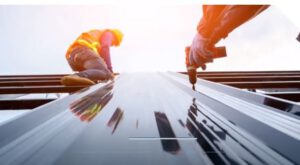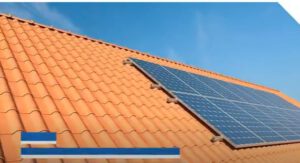 Australian homes have distinct needs when it comes to roofing, thanks to the continent’s unique climate. One option that has been gaining popularity is Colorbond roofing, renowned for its practicality, aesthetics, and efficiency. But like any material, it comes with both benefits and drawbacks.
Australian homes have distinct needs when it comes to roofing, thanks to the continent’s unique climate. One option that has been gaining popularity is Colorbond roofing, renowned for its practicality, aesthetics, and efficiency. But like any material, it comes with both benefits and drawbacks.
Advantages of a Colorbond Roof
Durability and Longevity
One of the defining advantages of Colorbond roofing is its impressive durability. Made from high-quality steel, it’s designed to withstand the harshest Australian weather, from blistering heatwaves to torrential rain and high winds. It is also termite resistant, a significant advantage in areas where these pests are prevalent. Furthermore, Colorbond steel does not crack, peel, or warp, offering homeowners a lifespan exceeding 50 years with proper maintenance.
Aesthetics and Versatility
The aesthetic appeal of Colorbond roofs is another significant advantage. Available in a wide array of colors, homeowners can easily match their roof with their home’s exterior design. The roof’s clean lines and modern finish add a touch of elegance, boosting curb appeal. Additionally, Colorbond steel is not just versatile in terms of color but also in design. Its lightweight nature makes it suitable for both traditional and contemporary architectural styles, including complex roof designs.
Thermal Efficiency
Colorbond roofs are highly thermally efficient, a crucial factor considering Australia’s extreme temperatures. The steel used in Colorbond roofing reflects more of the sun’s heat, reducing the need for excessive air conditioning and lowering energy costs. Some Colorbond roofing products even come with Thermatech technology, further enhancing this heat reflective property.
Environmental Friendliness
Colorbond roofing materials are 100% recyclable, reducing the impact on the environment. Additionally, the production process for Colorbond steel is highly controlled and optimized, leading to less on-site wastage compared to traditional roofing materials. Its lightweight nature also means fewer emissions are produced during transport.
Disadvantages of a Colorbond Roof
Initial Cost
While Colorbond roofing offers significant long-term benefits, one of its main drawbacks is the initial cost. The material and installation costs for Colorbond roofs can be higher than traditional roofing materials like tiles. However, considering its longevity and lower maintenance costs, many homeowners find this initial investment worthwhile.
Noise Levels
Colorbond roofs are notorious for being noisy, especially during heavy rain. This can be an inconvenience for some homeowners. However, the application of insulation and noise-deadening materials during installation can significantly reduce this noise.
Professional Installation
While the lightweight nature of Colorbond roofs makes them easier to install, the process still requires skilled professionals to ensure correct installation. Incorrect installation can lead to problems like leaks, which could damage your home’s interior.
Thermal Conduction
 While Colorbond roofs are excellent at reflecting radiant heat, they can sometimes struggle with thermal conduction. On very hot days, they may radiate more heat into the home. Adequate insulation is crucial to counteract this potential disadvantage.
While Colorbond roofs are excellent at reflecting radiant heat, they can sometimes struggle with thermal conduction. On very hot days, they may radiate more heat into the home. Adequate insulation is crucial to counteract this potential disadvantage.
Flexibility
Another advantage of Colorbond roofs is their flexibility. They can be adapted to fit different shapes and sizes, allowing for a range of creative designs. This makes them ideal for people looking to add an aesthetically pleasing element to their home’s exterior.
Factors To Consider
Before investing in a Colorbond roof, it’s important to consider the factors that will affect its performance and lifespan. They include:
- Local climate: The type of Colorbond roof you choose will depend on your local climate. In some climates, a lighter-coloured roof may be preferable as it will reflect more heat and help to keep the home cooler.
- Installation: Make sure that your roof is installed correctly with no gaps or weak spots. Poor installation can lead to problems such as leaks, which can cause costly damage down the line.
- Maintenance: Colorbond roofs require regular maintenance to keep them looking and performing their best. This includes cleaning and inspecting for signs of wear and tear.
- Cost: While a Colorbond roof is generally a more expensive option than other materials such as asphalt shingles, it will typically last longer and require less maintenance, so it may be worth the initial investment.
Conclusion
In sum, Colorbond roofing is an excellent choice for Australian homes, offering a host of advantages like durability, aesthetic appeal, thermal efficiency, and environmental friendliness. However, it’s crucial to consider the potential disadvantages such as initial cost, noise levels, need for professional installation, and thermal conduction. By carefully weighing these factors, homeowners can make an informed decision on whether a Colorbond roof is the right fit for their home.